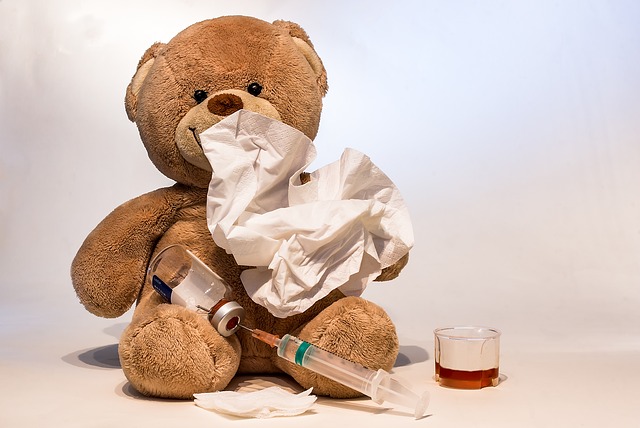Understanding Flue and its Prevention:
What do we call as Flu?
We usually think the common cold and the flu are the same as they share mutual features. This is because both caused by viral infections, have similar symptoms, and usually can be treated at home. They additionally develop bit by bit, with certain symptoms emerging as the infection progresses. But if we notice sharply the differences in the onset, severity, and duration of the typical cold or bout of influenza we can become more cautious. A low-grade fever isn’t out of the question. Most flu symptoms gradually improve over two to five days still one may feel run down for a week or more. A common complication of the flu is the respiratory disorder, particularly in the young, elderly, or people with lung or heart problems. Another common sign of pneumonia is the fever that comes back after having been gone for a day or two.
Do you know the Stages of Cold & Flu?
The common cold starts off with its signs developing slowly. The contagious period for the common cold life-span can be a couple of days before cold symptoms kick in and continue for some days afterwards. The most usual cold symptoms are fatigue, sore or scratchy throat, nasal congestion, stuffiness or a runny nose, followed by sneezing and coughing. Cold symptoms generally appear about one to three days after exposure to a cold-causing virus but it can differ from person to person. Generally, the cold symptoms will peak around day four and taper off in the seventh day. Over the course of the illness, the mucus discharged by a runny nose may change colour starting out clear and becoming thicker, yellow, or green. The full life cycle of a cold is usually between 7-10 days. If your symptoms persist over the time period or keep returning, then something else may be going on, such as allergies, sinusitis, or a secondary infection.
Flu symptoms typically begin at intervals one to four days when infection. Unlike a standard cold, the effects of an influenza virus infection can appear drastically. The first signs of the flu are often a fever or chills, accompanied by a headache, sore throat, dry cough, runny nose, muscle aches, and fatigue. As the sickness progresses, a person may have warm, flushed skin, watery or bloodshot eyes, a severe cough that produces phlegm, and nasal congestion. Among children, nausea and vomiting may also occur. The flu usually lasts 1 to 2 weeks, with severe symptoms subsiding in two to three days. However, weakness, fatigue, dry cough, and a reduced ability to exercise will linger for 3 to 7 days.
Is the Flu Contagious?
A survey stated that 41% of people think the flu is only contagious after symptoms start. That’s not true. Adults with a fever of 102F or higher and children with a fever of 103F or higher should see a doctor. If you notice shortness of breath, let your doctor recognize.
An adult infected with influenza may be contagious from one day before symptoms start until 5-7 days after becoming sick. Children could still be contagious extending than seven days.
For individuals who’ve had a grippe shot, the symptoms last a shorter amount of time or are less severe. Even if the symptoms disappear, you may continue to feel fatigued. Staying home until your contagious period ends help you avoid passing germs on to other people.
When complications develop, a person will likely be sick for longer than 15 days, depending on the severity of the complication, how quickly they are aided, and how well they respond to treatment. Even in healthy people who don’t develop complications, the flu can cause symptoms that persist for weeks, including fatigue, low appetite and dry cough associated with loss of sense of smell.
Symptoms of FLU:
Signs of severe complications that ought to prompt you to hunt medical attention include the following:
- Difficulty breathing or shortness of breath
- Purple or blue discolouration of the lips
- Pain or heavy chest and abdomen
- High fever
- Sudden dizziness
- Confusion
- Severe or persistent vomiting
- Seizures
- Worse cough
Some people are at magnified risk for complications from contagion such as
- the very young
- people 65 or older
- obese people crossing body mass index (BMI) of 40
- chronic illness patients of asthma, heart disease, HIV, or diabetes
- pregnant women
People in these groups are prone to have weak defense systems and are vulnerable to the complication of pneumonia, which can be deadly.
How Long Does Immunity Last?
A study printed in March 2017 within the journal Clinical Infectious Diseases confirmed that immunity declines over the months following vaccination or infection. Unlike other viral diseases, with the flu, however, you are not immune for life and the immunity doesn’t last that long. Getting injected regularly is vital to lower your chance of getting affected. It takes some time to develop immunity to the flu, and experts recommend getting vaccinated before flu season is in full swing to ensure adequate protection. The flu—or contagion—is an extremely contagious metastasis virus caused by one in all 3 completely different virus types: influenza A, B, or C. It spreads instantly through the spit droplets that become mobile once somebody sneezes or coughs, by exposure to saliva passed by routine contacts, such as kissing or sharing eating utensils.
Prevention &Treating Flu
Fever is an important sign for any kind of flu. Catherine Troisi, PhD, an associate professor in the community health and epidemiology at the University Of Texas School Of Public Health in Houston says, “It’s really basic public health practices.” Moreover, we ought to keep home if we are sick, get enough sleep, and eat well.
Pain relievers lower your fever and relieve the aches, but if you are at high risk of complications, and if it is early in the infection, your doctor may recommend an antiviral drug like oseltamivir or zanamivir. Postnasal drip, in which mucus accumulates or drips in the back of the throat, can further aggravate a sore throat or a cough.
Basic Practices
- Get an annual flu vaccine course.
- Before eating or touching your face wash your hands with soap and water.
- Regular smokers are more likely to get the flu than non-smokers. Quit smoking.


